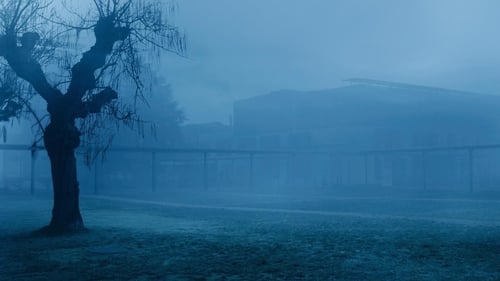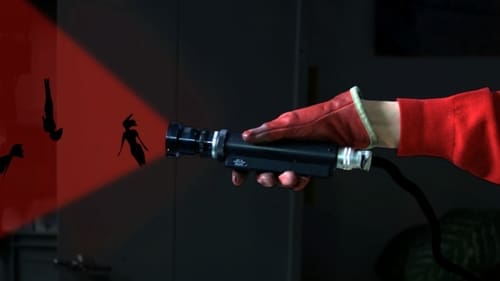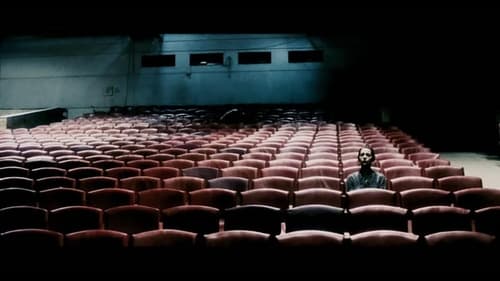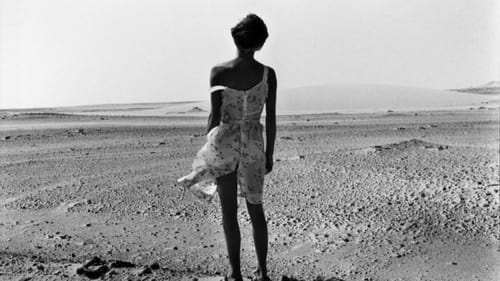
Delegated Producer
Documentary that follows the movement of the collage makers throughout France.

Cinematography
12 dias após a sua chegada, indivíduos internados em um hospital psiquiátrico sem o seu consentimento aparecem em uma audiência. Um juiz se senta de um lado, o paciente do outro, e um diálogo sobre o significado da palavra "liberdade" e a vida é iniciado.

Director
12 dias após a sua chegada, indivíduos internados em um hospital psiquiátrico sem o seu consentimento aparecem em uma audiência. Um juiz se senta de um lado, o paciente do outro, e um diálogo sobre o significado da palavra "liberdade" e a vida é iniciado.

Director
Raymond Depardon sets out to meet French people to listen to them tell their tales. From Charleville-Mézières to Nice, Sète to Cherbourg, he invites people encountered in the street to continue their conversation in front of Depardon's camera and us, unfettered from any constraints.

Director
On the 8th floor of the Fondation Cartier in Paris, Raymond Depardon's film features a minute of silence with eight artists and scientists: David Lynch, Patti Smith, William Eggleston, Takeshi Kitano, Ron Mueck, Jean Michel Alberola, Agnès Varda and Misha Gromov.

himself
In lights and colors, Raymond Depardon photographs according to his desires. He retraces his steps, wanders around the places he loves or discovers: Buenos Aires, Paris, Los Angeles, Honolulu, the Mediterranean, Faya-Largeau, Modra and his peasant friends's homes. A portrait in the atmosphere of a free man.

A journal, a voyage through time. He photographs France, she rediscovers the unseen footage he has so carefully kept: his first steps behind the camera, his TV reports from around the world, snatches of their memories and of our history.

Director
A journal, a voyage through time. He photographs France, she rediscovers the unseen footage he has so carefully kept: his first steps behind the camera, his TV reports from around the world, snatches of their memories and of our history.

Director
The film allows mathematicians involved in the creation of the exhibition to express themselves in their own words and includes Sir Michael Atiyah, Jean-Pierre Bourguignon, Carolina Canales González and Giancarlo Lucchini, Alain Connes, Nicole El Karoui, Misha Gromov, Cédric Villani and Don Zagier.

Self
Carrying on Luc Moullets unfinished screenplay about the theft of la pénélope, a camera created by Aaton and capable of recording equally well in 35 mm and digitally, LA ROUGE ET LA NOIRE is a film in kaleidoscope form. The portrait of Aatons founder, Jean-Pierre Beauviala creator, inter alia, of the time-code and the light cameras used by the New Wave (in particular the bush camera specially designed for Jean Rouch) is centered around the basic plot introduced by two women thieves who talk as voice-overs, and whose identities will only be revealed at the end.

Writer
For ten years, Raymond Depardon has followed the lives of farmer living in the mountain ranges. He allows us to enter their farms with astounding naturalness. This moving film speaks, with great serenity, of our roots and of the future of the people who work on the land. This the last part of Depardon's triptych "Profils paysans" about what it is like to be a farmer today in an isolated highland area in France. "La vie moderne" examines what has become of the persons he has followed for ten years, while featuring younger people who try to farm or raise cattle or poultry, come hell or high water.

Director
For ten years, Raymond Depardon has followed the lives of farmer living in the mountain ranges. He allows us to enter their farms with astounding naturalness. This moving film speaks, with great serenity, of our roots and of the future of the people who work on the land. This the last part of Depardon's triptych "Profils paysans" about what it is like to be a farmer today in an isolated highland area in France. "La vie moderne" examines what has become of the persons he has followed for ten years, while featuring younger people who try to farm or raise cattle or poultry, come hell or high water.

Director
Documentary Short

Documentary Short

Director
A collective film of 33 shorts directed by different directors about their feeling about cinema.

Director
A small crowd attends a makeshift movie theatre.

Director
The Garet farm is for sale. Brothers Jean and Raymond Depardon chat about the past and the future of the farm.

himself (voice)
The Garet farm is for sale. Brothers Jean and Raymond Depardon chat about the past and the future of the farm.

Director
Second documentary of a trilogy produced on the long term (together with Profils paysans: l'approche (2001) and Profils paysans: La vie moderne (2008)), showing the simple lives of farmers in contemporary Southern France.

Director
The proceedings of a Paris courtroom are the grist for this documentary. Drawn from over 200 appearances before the same female judge, the director chooses a dozen or so varied misdemeanor and civil hearings to highlight the subtle details of human behavior. In the process he draws attention to issues of guilt, innocence, policing and ethnicity in France.

Narrator (voice)
Loosely based on Diégo Brosset’s novel, set in the Sahara at the beginning of the twentieth century. A man of the desert is adopted by some hunters and becomes a highly respected guide while trying to escape colonization.

Cinematography
Loosely based on Diégo Brosset’s novel, set in the Sahara at the beginning of the twentieth century. A man of the desert is adopted by some hunters and becomes a highly respected guide while trying to escape colonization.

Writer
Loosely based on Diégo Brosset’s novel, set in the Sahara at the beginning of the twentieth century. A man of the desert is adopted by some hunters and becomes a highly respected guide while trying to escape colonization.

Director
Loosely based on Diégo Brosset’s novel, set in the Sahara at the beginning of the twentieth century. A man of the desert is adopted by some hunters and becomes a highly respected guide while trying to escape colonization.

Cinematography
Following the 1974 French presidential campaign with Valery Gicard d'Estaing

Director
Following the 1974 French presidential campaign with Valery Gicard d'Estaing

Director
The first of a documentary serie about rural France

Director
Muriel Leferle is 22-years-old, a convicted felon, HIV-positive, and can talk her way out of nearly anything. Filmmaker Raymond Depardon first encountered Leferle while shooting his documentary Delits Flagrants/Caught In The Act, about criminals dealing with the judicial system, and eventually decided her story was too good to limit to the 20 minutes of screen time she won in that picture. Muriel Leferle tells her hair-raising life story in greater scope than in the earlier film (both the truth and the version she gives to the judge); despite an unrepentant attitude about her life of crime, Leferle comes off as oddly likable, with street smarts and spunk to spare.

Director
Utilizing a combination of professional actors and man-on-the-street interviews, French director Raymond Depardon has created a film about filmmaking that centers on a rather discriminating director's search for the perfect leading lady. The main problem is that the helmer (Luc Delahaye) doesn't really know what his next film will be about, let alone what kind of woman should be his star. Looking for inspiration, the director and his casting agent (Sylvie Peyre) visit the Saint Lazare train station in Paris and shoot some footage of passengers entering and exiting the trains. Later he encounters a few actresses, but rather than asking about their professional experiences, the director focuses on their personal lives. After several fruitless interviews, the director confesses to the casting agent that he really wants to utilize a non-professional actress.

Director
Using a rostrum camera, Raymond Depardon films a long series of photos, from the narrow streets of Paris to the endless desert, accompanied by original sounds of the city. A Cartier Foundation initiative for the contemporary arts.

Sound
Miscellaneous images of African life.

Director of Photography
Miscellaneous images of African life.

Director
Miscellaneous images of African life.

Director
40 international directors were asked to make a short film using the original Cinematographe invented by the Lumière Brothers, working under conditions similar to those of 1895. There were three rules: (1) The film could be no longer than 52 seconds, (2) no synchronized sound was permitted, and (3) no more than three takes.

Director
Anthology of short films about the French city of Nice, by various directors. A homage to Jean Vigo and his "À propos de Nice" from 1930.

Director
In the context of the World Aids Day on the 1st December 1994, the French Ministry of Defence commissioned the producer Raymond DEPARDON to make a film to show to all new French military recruits called up for their national service, in which they gave their 'personal' views on the AIDS (Sida) problem. Each year about 240.000 young men are called to do their military service in the French Armed Forces. They remain in bases both in France and in French overseas territories, the film will be projected throughout these multiple installations. The 'on camera" interviews by Depardon were authorised without any form of restriction by the military authorities, selecting a scattering of young men from all walks of life who will spend 10 months under the flag. They were each free to give their own personal opinions related to the Aids problem, without any form of censorship.

Director
This documentary is a collection of footage of 14 suspects being 'interviewed' by the deputy public prosecutors.

Director
Raymond Depardon had photographed the city of Beirut before it was destroyed and rebuilt. He films a long take of his photographs, like a circular panorama, producing a videoclip for the song "Face à la mer" by french rock band Les Negresses Vertes.

Director
Contre l'Oubli (Against Oblivion) is a compilation of 30 French filmmakers, Alain Resnais and Jean Luc Godard among them, who use film to make a plea on behalf of a political prisoner. Jean Luc Godard and Anne Marie Mieville's film concerns the plight of Thomas Wanggai, West Papuan activist who has since died in prison. The short films were commissioned by Amnesty International.

An almost blind writer moves to a hidden property in an Alpine village with a female friend, Renata. The two play sado-masochistic games including long recitals of elaborate texts. A neighbor, Serge, gets interested in the mysterious couple.

Director
Short film of Raymond Depardon

Writer
An European researcher is abducted by some ill-educated rebels in a North African country. Their reasons are unclear...

Director
An European researcher is abducted by some ill-educated rebels in a North African country. Their reasons are unclear...

Writer

Director

Director
A documentary filmed in the psychiatric ward of the Motel Dieu at a large hospital in Paris. The patients arrive on their own, or with considerable help from the police, but all of them are in need of medical attention.

Narrator (voice)
It is slow, succinct and absolutely riveting. With his photojournalist's eye, and simple but inspired camera work, Depardon plunges us into both the sounds and silences of a day and a night in the city.

Director of Photography
It is slow, succinct and absolutely riveting. With his photojournalist's eye, and simple but inspired camera work, Depardon plunges us into both the sounds and silences of a day and a night in the city.

Director
It is slow, succinct and absolutely riveting. With his photojournalist's eye, and simple but inspired camera work, Depardon plunges us into both the sounds and silences of a day and a night in the city.

Director of Photography
A man invites a woman to share his room in a hostel and gradually falls in love with her.

Writer
A man invites a woman to share his room in a hostel and gradually falls in love with her.

Director
A man invites a woman to share his room in a hostel and gradually falls in love with her.

Director
This documentary is an autobiography based on director Depardon's voice, his face and pictures from his childhood which are all mixed together on screen and contrasted with selected pictures he shot between 1957 and 1977 and now comments on.

Director
This documentary follows the daily life of a section of the police station of the fifth "arrondissement" (district) of Paris.

himself
A fortuitous meeting, late one afternoon, in the garden of the Tuileries, of one or two cameras, a tape recorder, and three cameramen/directors, Raymond Depardon, Jean Rouch, and Philippe Costantini.

Director
This documentary is about the life of a Venetian psychiatric hospital. The relationships between the doctors, the patients and their families are followed.

Sound
The co-founder of the Gamma press agency, Raymond Depardon, created this documentary of press photographers in Paris and their subjects by following the photographers around for one month, in October, 1980. In-between long hours waiting for a celebrity to emerge from a restaurant or a hotel, boredom immediately switches to fast action as the cameras click and roll when the person appears. The reaction to the gaggle of photographers is as varied as the people they often literally chase all around town. While some of the celebrities, such as Jacques Chirac who was mayor of Paris at the time, are perceived as comical caricatures, others are shown simply going about ordinary pursuits - including Catherine Deneuve, Gene Kelly, and Jean-Luc Godard.

Cinematography
The co-founder of the Gamma press agency, Raymond Depardon, created this documentary of press photographers in Paris and their subjects by following the photographers around for one month, in October, 1980. In-between long hours waiting for a celebrity to emerge from a restaurant or a hotel, boredom immediately switches to fast action as the cameras click and roll when the person appears. The reaction to the gaggle of photographers is as varied as the people they often literally chase all around town. While some of the celebrities, such as Jacques Chirac who was mayor of Paris at the time, are perceived as comical caricatures, others are shown simply going about ordinary pursuits - including Catherine Deneuve, Gene Kelly, and Jean-Luc Godard.

Director
The co-founder of the Gamma press agency, Raymond Depardon, created this documentary of press photographers in Paris and their subjects by following the photographers around for one month, in October, 1980. In-between long hours waiting for a celebrity to emerge from a restaurant or a hotel, boredom immediately switches to fast action as the cameras click and roll when the person appears. The reaction to the gaggle of photographers is as varied as the people they often literally chase all around town. While some of the celebrities, such as Jacques Chirac who was mayor of Paris at the time, are perceived as comical caricatures, others are shown simply going about ordinary pursuits - including Catherine Deneuve, Gene Kelly, and Jean-Luc Godard.

Director
On the eve of the publication of the zero issue of the daily newspaper "Le Matin de Paris", we dive into the heart of an editorial staff in turmoil, directed by Claude Perdriel.

Cinematography
The documentary is about the ceremony dedicated by American people to John Lennon after his murder. The 10 minutes of silence in New York's Central Park allows a deep observation of the particularly immobile people.

Director
The documentary is about the ceremony dedicated by American people to John Lennon after his murder. The 10 minutes of silence in New York's Central Park allows a deep observation of the particularly immobile people.

Sound

Director

Cinematography
This documentary draws a sensitive, unsensational portrait of the desert and the people who inhabit it, the Toubous.

Director
This documentary draws a sensitive, unsensational portrait of the desert and the people who inhabit it, the Toubous.

Producer
This documentary draws a sensitive, unsensational portrait of the desert and the people who inhabit it, the Toubous.

Sound

Director

Director

Sound

Director

Director
For his directing debut Ian Palach, Raymond Depardon, photographer and co-founder of photo agencies Gamma and Magnum, travelled to Prague in 1968. There, on 25 January, the Czechoslovak student Jan Palach was to be buried. A few days before, this young man had doused himself with gasoline and set himself on fire, in protest of the Russian occupation of Czechoslovakia and the purging of the members of the Prague Spring movement. Palach's political self-sacrifice does not remain without consequence for long. Although the government did its utmost to discourage the Czechoslovaks, 800,000 mourners gathered to form a long, impressive cortege as forceful evidence that Palach was not alone in his protest.

Director


















































